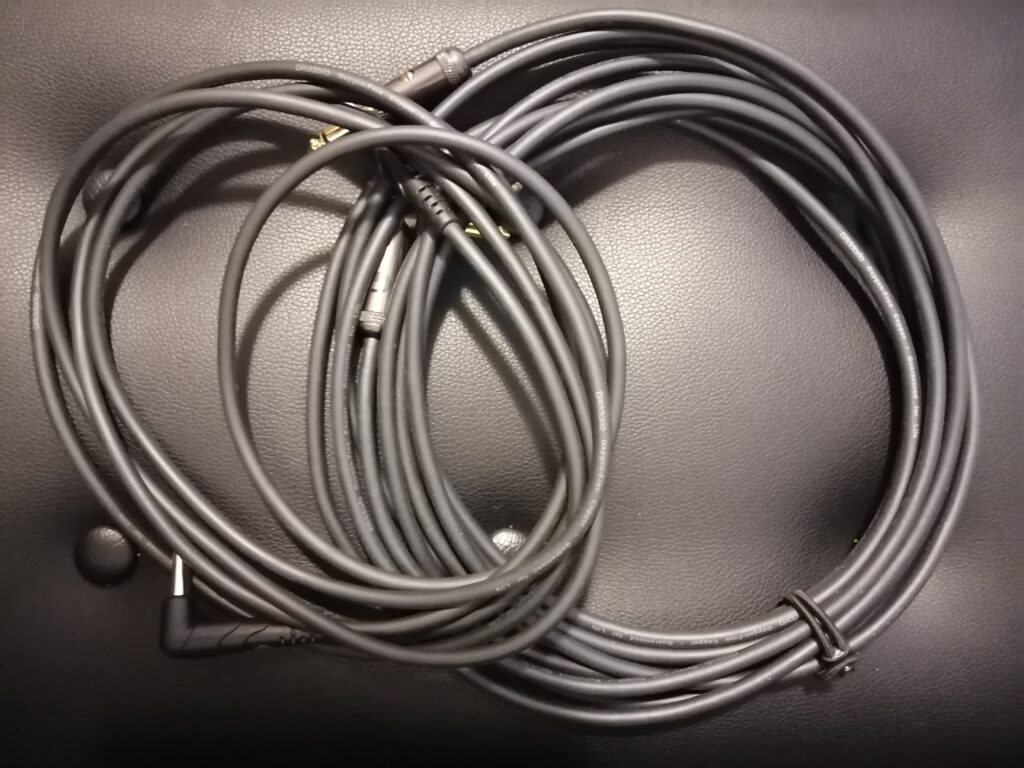In the past few weeks, I’ve have a few people come to me asking about how to make a song with two chords. There are many ways to do this, of course, so we’ll list a few examples and then we’ll write a song with two chords that we choose.
The advantage of two chord songs is that you don’t have to think about a lot of things when composing. You just find/pick your chords, play them until they are living in your head/ears, and then begin improvising vocal or instrumental melodies over top to start on your way to your own song.
What are some options for these two chords?
There are a ton of options. Let’s begin by listing some typical progressions you’ve probably heard and/or are easy to get in your head. We’ll stick to concert C major for this discussion and include what scale degree they are built off of so it’s easier for you to transpose:
- D minor (2, ii) and C major (1, I)
- D minor (2, ii) and G major (5, V)
- C major (1, I) and F major (4, IV)
- E minor (3, iii) and F major (4, IV)
- A minor (6, vi) and F major (4, IV)
- C major (1, I) and A minor (6, vi)
- D minor (2, ii) and A minor (6, vi)
Now, for our song we’re going to write, we’re going to use a different set of chords that are both from different keys that use common tones (shared chord/scale tones) to give them a strong sense of connectivity and relation.
The chords we’re going to use are Ebmaj7 and Gbmaj7#11. Let’s spell out these chords, the notes in their scales, and put the common tones in italics below.
- Ebmaj7 – Eb G Bb D – scale: Eb F G Ab Bb C D
- Gbmaj7 – Gb Bb Db F – scale: Gb Ab Bb C Db Eb F
- Common tones: Eb F *Ab* Bb C – *Ab is best used as a transition note to Ebmaj7 from Gbmaj7. Just play an Ab on Ebmaj7 and you’ll hear that it wants to resolve to G on that chord.
There are quite a few common tones between these two chords. That is the main reason for choosing these chords for our song.
There are a lot of things you can do with common tones and distant keys/chords that you’ll discover in your musical exploration. This is where theory is paramount. When you know your music theory, it’s much easier to navigate and understand what chords share what tones and then be able to more easily produce material.
Taking ideas from what we have
These chords, when played one after the other in a progression, give a feeling of floating in an exotic soundscape. As we’ve already talked about, they’re just two chords that are simple on their own. However, they transport us to a different world of tonality from our typical chord progressions that stay within one key.
A good way to begin thinking of melodies is to find the common tones and any semitone relationships between the two chords. Take just the notes F G Bb on the Ebmaj7 and then swap the G for an Ab when you play Gbmaj7 and play F Ab Bb instead.
Let’s make some lyrics that sound like the chord progression: like they’re deep in meaning and concept but really just simple things that sound more complex than they are.
Lyrics
As the moon begins to drown
Beneath the clouds in the sky
There’s no light to be found
Is it gone or did it hide?
The darkening of the night
Puts us all in a swirl
Is this the end of the light?
Or beginning of a whole new world?
Just as you start to repent
You feel the world around you
Slowly approaching content
The time is coming due
Thousands of years
Crammed in a century
Time disappears
Into a memory
A memory
Let’s listen and reflect
Here’s the song:
The lyrics I wrote are just general words about an evening going into the darkest part of night and coming back into the day. However, it could easily be interpreted as being about climate change or parts of human history.
That’s one of the beauties of lyricism and art; the interpretation can be whatever you can or want to connect with.
With the simplicity of the chords, I was easily able to make vocal harmonies for the final section. I improvised all of the melodies for this piece and then decided to harmonize the final section in full chords. I started with the top note in the harmony and added notes below it that were within the chord-scale relationship on each given chord. This, again, is where knowing theory and harmony comes in handy for being able to quickly and accurately create, develop, and produce vocal harmonies.
One tip for your recording process when doing vocals is to record the notes on an instrument (guitar, piano, trumpet, whatever) that you are comfortable with and know you can accurately produce the notes you’re looking to sing. Doing this also forces you to try to “sing” on your instrument, which helps you develop more vocal-style phrasing with your playing, especially on chordal instruments that don’t require air to play.
Final words
Take your time and enjoy the process of choosing chords for a song or progression and then improvising over top of them. You’re welcome to book a lesson or to contact me if you’d like to book a package of lessons to discuss all of this and more.
Remember to practice with your metronome, study basic chord progressions and song structures, explore your instrument, and ask questions about as well as share what you’re learning.
As always, thank you for your time, be kind to yourself, have fun, and see you in the practice room.
– Matt
